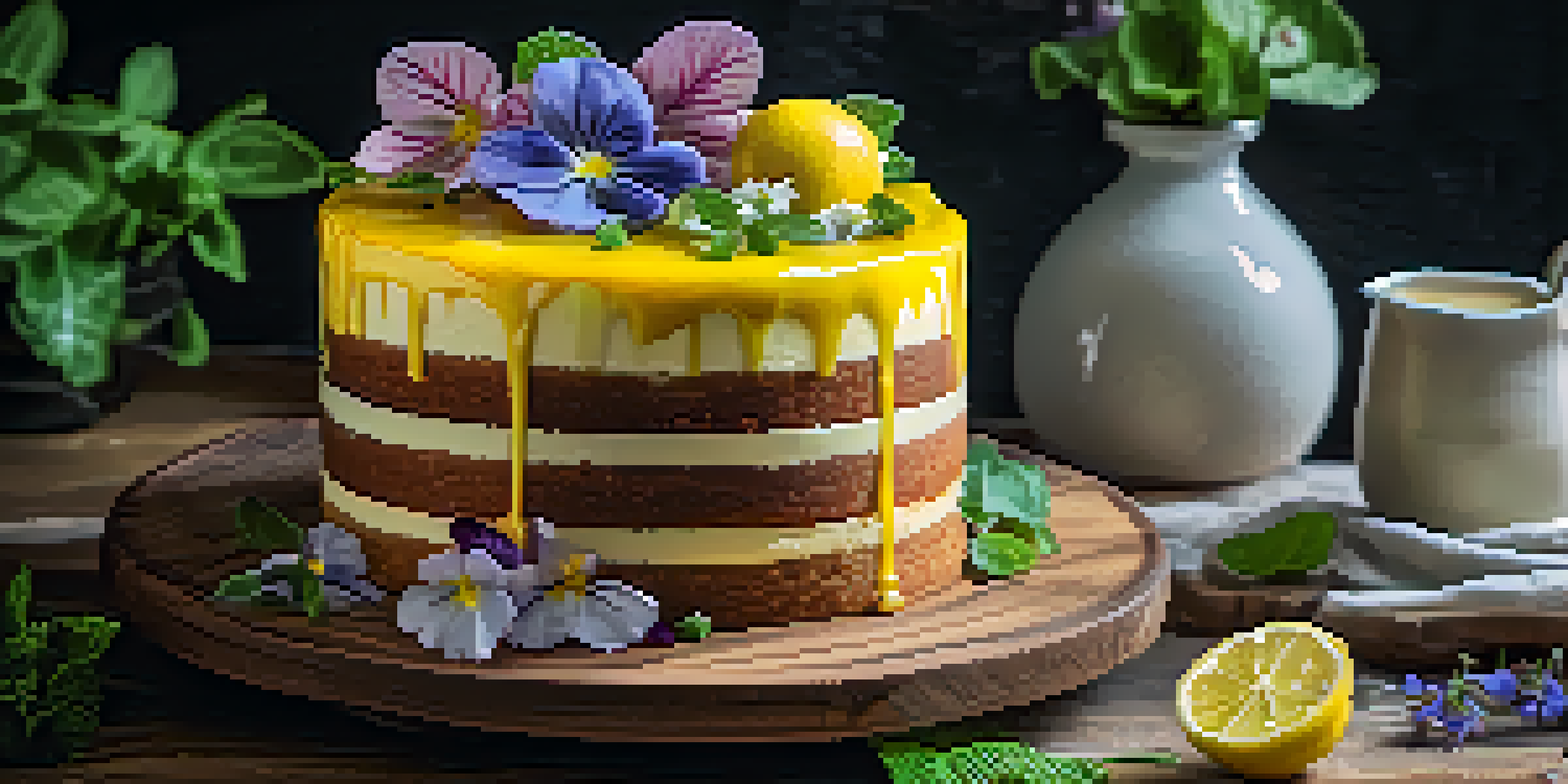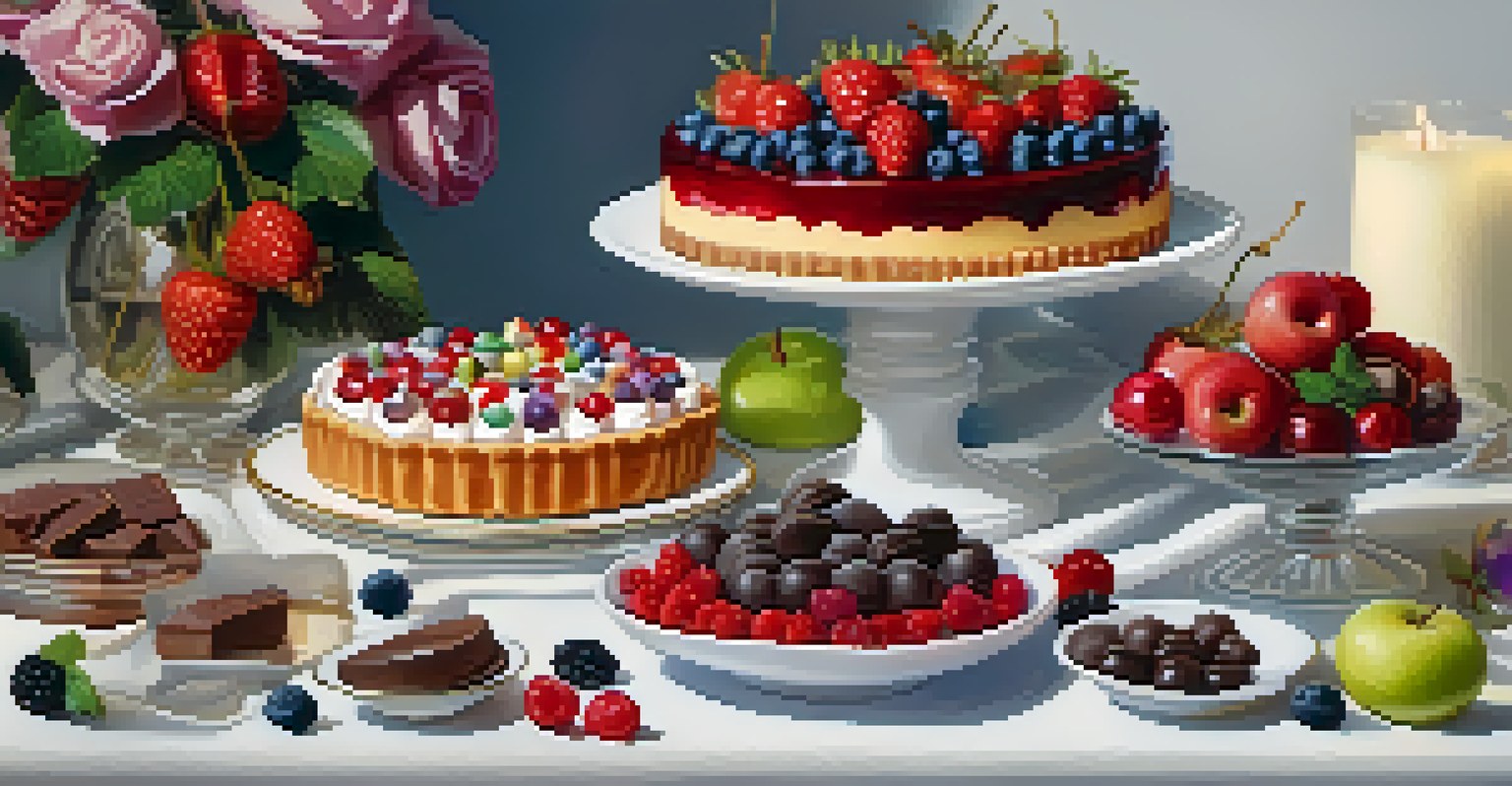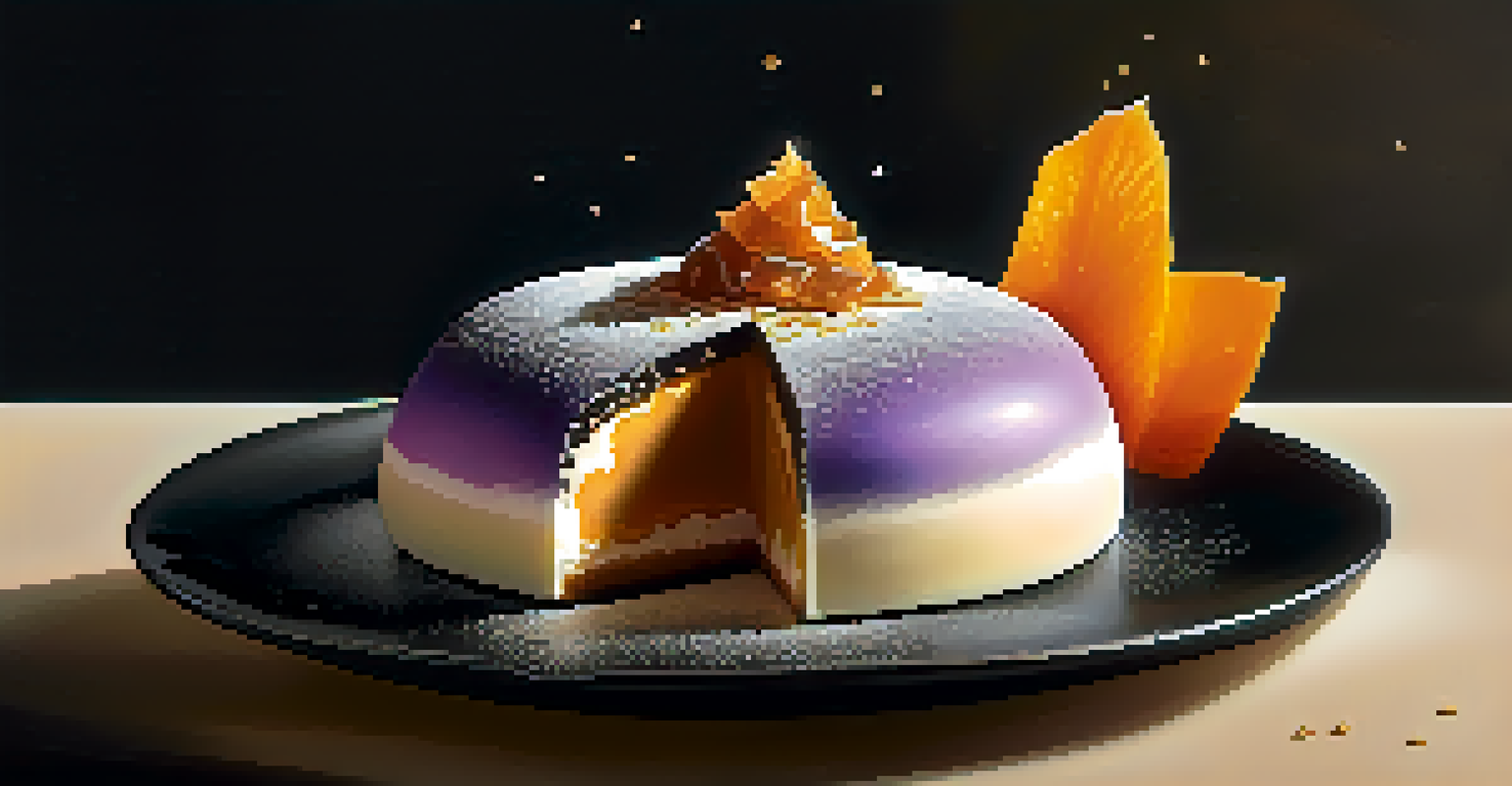Artful Desserts: Crafting Sweet Treats that Captivate Eyes

The Importance of Visual Appeal in Desserts
In the world of desserts, the first impression is often the most lasting. A beautifully presented treat not only whets the appetite but also sparks curiosity and excitement. Think about how a rainbow-colored cake or intricately decorated cookies can instantly brighten your mood.
Desserts are the most important part of any meal. They are the cherry on top of a delicious experience.
Visual appeal plays a crucial role in how we perceive flavor. Research shows that people often rate the taste of food higher when it looks good. It's like how a perfectly plated meal at a restaurant makes you more eager to dig in—desserts deserve that same attention.
When crafting desserts, consider how color, texture, and arrangement can elevate your creation. Just as an artist chooses their palette, bakers can select vibrant toppings and garnishes that make their desserts pop. This focus on aesthetics transforms simple sweets into works of art.
Choosing the Right Ingredients for Stunning Treats
The foundation of any delightful dessert starts with the right ingredients. High-quality, fresh components can significantly affect both taste and appearance. For instance, using ripe fruits instead of canned ones can enhance the color and flavor of your tarts.

Also, consider how different textures contribute to visual allure. A creamy mousse topped with crunchy caramel shards creates an inviting contrast that draws the eye. It's all about pairing ingredients that not only taste great together but also look appealing side by side.
Visual Appeal Enhances Flavor Perception
Desserts that are beautifully presented not only attract attention but also improve how we perceive their taste.
Don’t shy away from experimenting with colors and flavors. Edible flowers, colorful sprinkles, or even vibrant sauces can transform your creations into a feast for the eyes. Remember, the goal is to create a harmonious balance that makes your desserts not only delicious but visually captivating.
Techniques for Decorating Desserts Like a Pro
Once you’ve baked your dessert, the real fun begins: decorating! Techniques like glazing, frosting, and layering can add depth and elegance to your treats. A shiny chocolate glaze over a cake can create a glossy finish that’s hard to resist.
The art of baking is a combination of science and creativity, where aesthetics meet flavor.
Piping is another essential skill that can elevate your dessert game. With a piping bag and various tips, you can create intricate designs on cupcakes, pastries, or cookies. It’s like painting with frosting, and the results can be breathtaking.
Don’t forget about garnishes! A simple mint leaf or a dusting of powdered sugar can make a world of difference. These finishing touches add a professional flair that shows you’ve put thought and effort into your dessert presentation.
Incorporating Seasonal Elements in Your Creations
One of the best ways to keep your desserts exciting is to incorporate seasonal elements. Using fresh fruits and flavors that celebrate the time of year not only improves taste but also enhances visual appeal. Imagine a summer berry tart bursting with bright colors and fresh flavors!
Seasonal decorations can also add a festive touch to your treats. Think of autumn-themed desserts adorned with caramel apples or winter treats featuring peppermint and chocolate. These small details can transform a sweet into a seasonal celebration.
Seasonal Ingredients Add Excitement
Incorporating seasonal elements in desserts not only boosts their flavor but also enhances their visual charm.
By aligning your dessert creations with the seasons, you’ll keep your offerings fresh and engaging. Plus, showcasing seasonal ingredients can connect your audience with the natural rhythm of the year, making each dessert a little more special.
The Role of Color Theory in Dessert Design
Color theory plays a fascinating role in how we perceive food, including desserts. Different colors can evoke various emotions and reactions. For example, warm colors like red and orange can stimulate appetite, while cool colors like blue and green can create a sense of calm.
When designing your desserts, think about how colors can complement each other. A chocolate cake with bright yellow lemon curd can create a stunning contrast that catches the eye. It’s all about balancing tones to create a visually appealing palette.
Additionally, consider the psychology of colors when planning your dessert menu. If you want to create an inviting atmosphere, opt for warmer hues. For a sophisticated touch, go for monochromatic designs that are chic and elegant.
Using Shapes and Structures to Enhance Desserts
The shape of your dessert can greatly influence its visual impact. Unique shapes, like a dome cake or a layered parfait, can make your treats stand out. Just think about how a traditional round cake can be transformed into an eye-catching hexagon.
Incorporating height into your desserts can also add interest. Layered cakes or towering cupcakes create a dynamic presentation that draws the eye upwards. This not only makes the dessert look more impressive but also invites curiosity.
Presentation is Key to Dessert Impact
The way desserts are presented, including the choice of dish and arrangement, can significantly influence their overall appeal.
Don’t hesitate to think outside the box—literally! Using unconventional molds or serving methods can turn a simple dessert into a conversation starter. It's all about pushing creative boundaries to captivate your audience.
Presenting Your Desserts for Maximum Impact
Presentation is key when it comes to showcasing your desserts. A simple white plate can highlight the colors of your sweet masterpiece, while a wooden board can add a rustic charm. The right dish can elevate your dessert from ordinary to extraordinary.
Consider the arrangement of your desserts as well. Grouping smaller treats together can create a visually appealing display, while a single, elegantly plated dessert can make a bold statement. The way you present your desserts can significantly affect how they are perceived.

Finally, lighting plays a crucial role in presentation. Natural light can bring out the true colors and textures of your creations, making them look even more enticing. Remember, the goal is to entice your audience not just with taste but with an unforgettable visual experience.